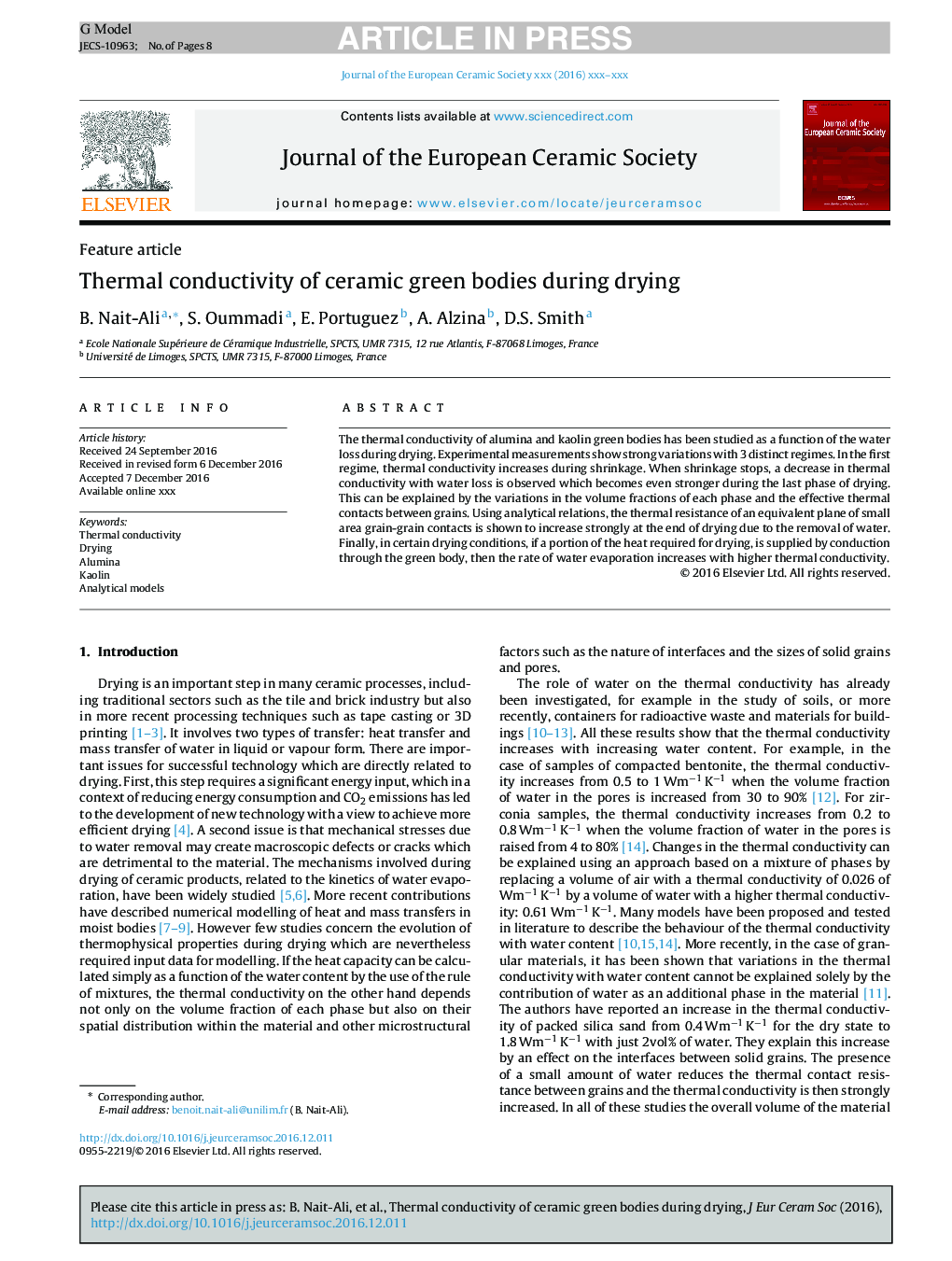| Article ID | Journal | Published Year | Pages | File Type |
|---|---|---|---|---|
| 5440714 | Journal of the European Ceramic Society | 2017 | 8 Pages |
Abstract
The thermal conductivity of alumina and kaolin green bodies has been studied as a function of the water loss during drying. Experimental measurements show strong variations with 3 distinct regimes. In the first regime, thermal conductivity increases during shrinkage. When shrinkage stops, a decrease in thermal conductivity with water loss is observed which becomes even stronger during the last phase of drying. This can be explained by the variations in the volume fractions of each phase and the effective thermal contacts between grains. Using analytical relations, the thermal resistance of an equivalent plane of small area grain-grain contacts is shown to increase strongly at the end of drying due to the removal of water. Finally, in certain drying conditions, if a portion of the heat required for drying, is supplied by conduction through the green body, then the rate of water evaporation increases with higher thermal conductivity.
Related Topics
Physical Sciences and Engineering
Materials Science
Ceramics and Composites
Authors
B. Nait-Ali, S. Oummadi, E. Portuguez, A. Alzina, D.S. Smith,
